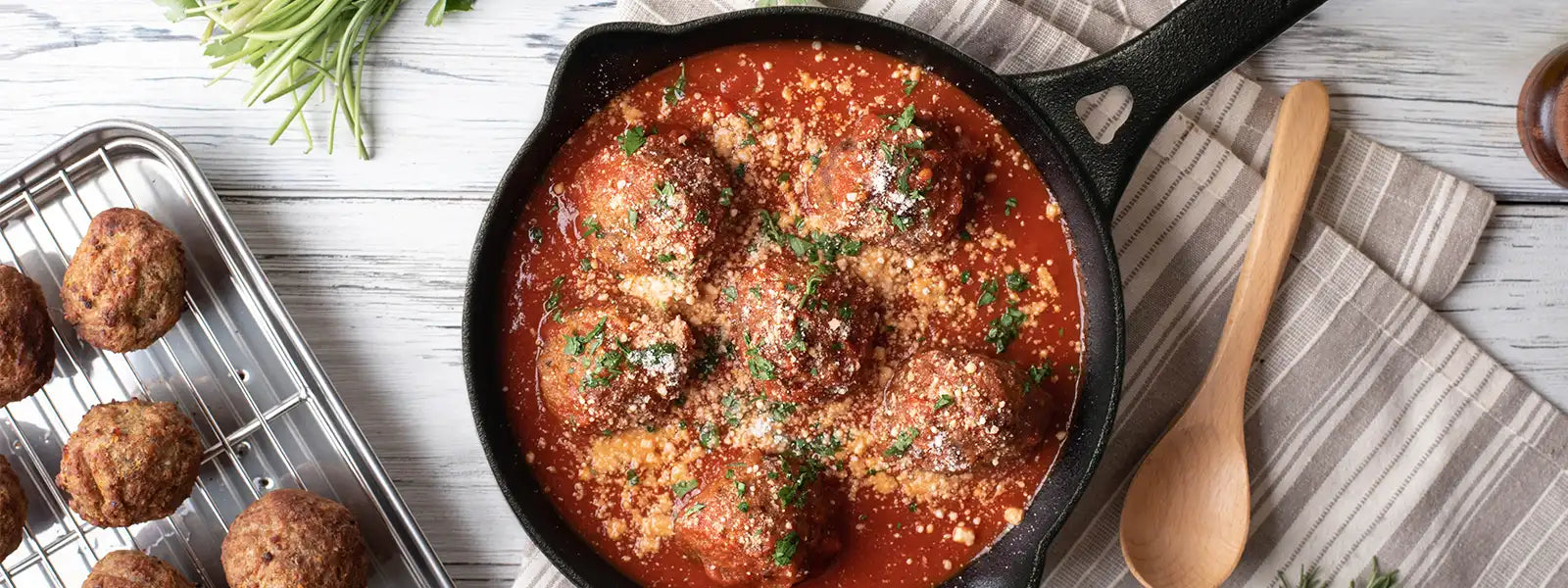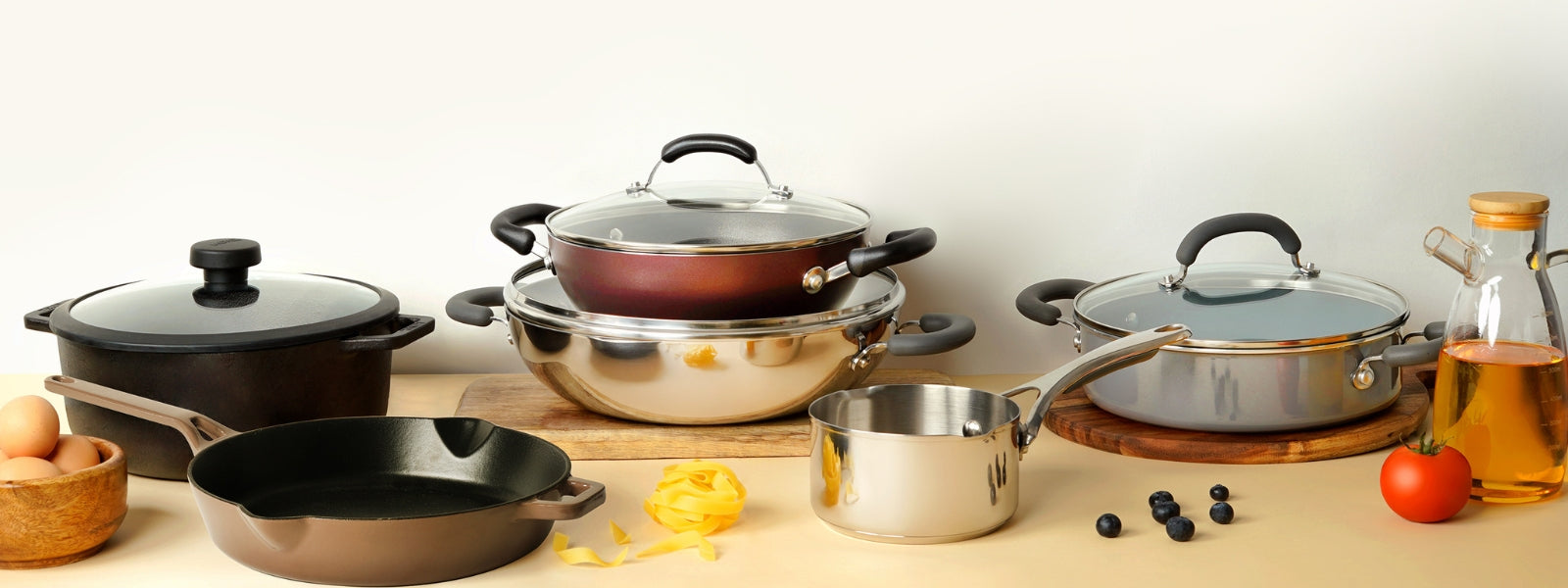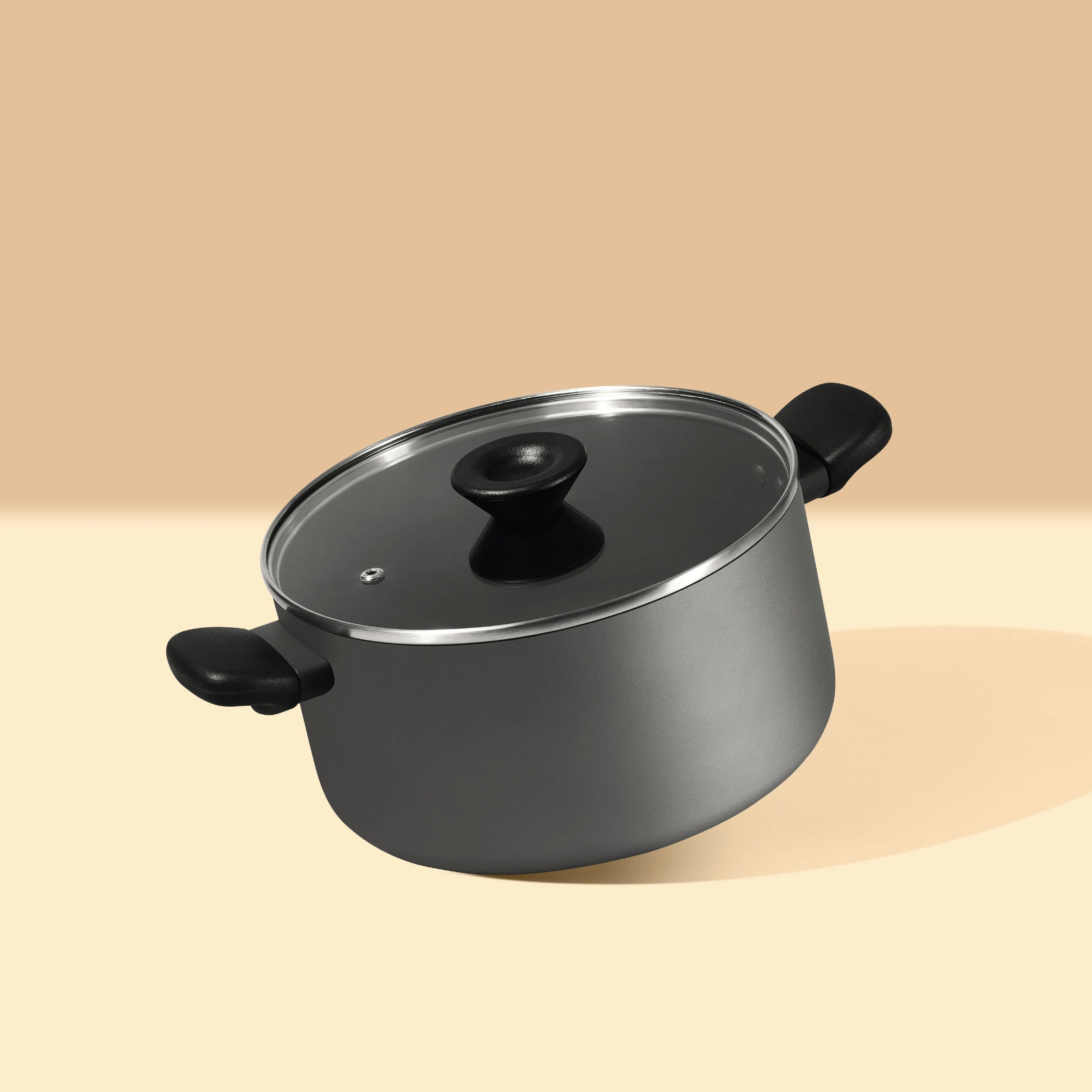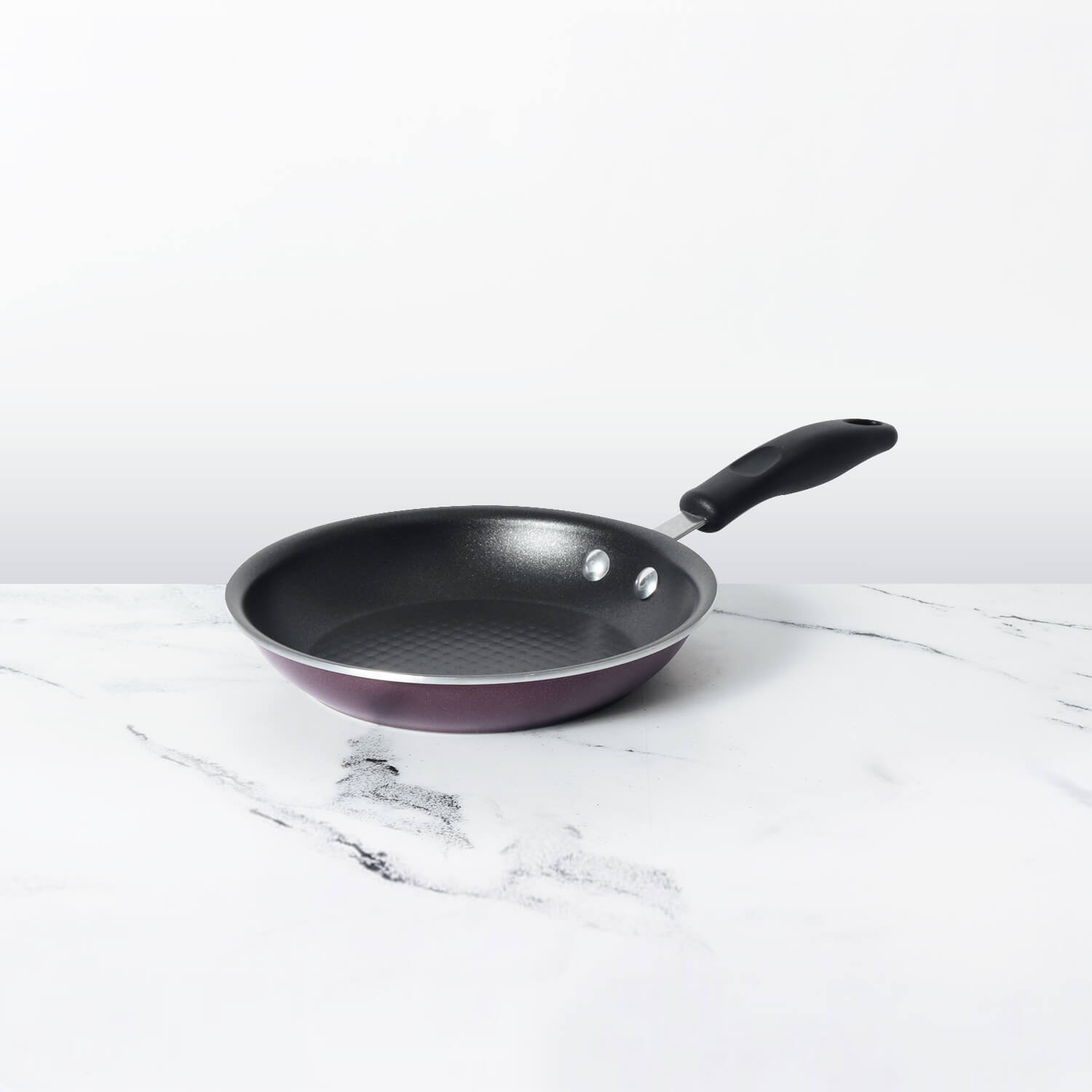Nonstick cookware significantly contributes to the cultivation of healthy cooking habits by facilitating the preparation of nutritious meals with minimal added fats or oils. With its smooth, non-stick surface, this type of cookware enables food to be cooked without sticking, eliminating the need for excessive oil or butter. By reducing oil consumption, nonstick cookware promotes lighter and lower-calorie cooking methods, making it easier to maintain a balanced diet and manage weight. Furthermore, the versatility of nonstick pans allows for a variety of cooking techniques, from sautéing and stir-frying to baking and roasting, accommodating diverse culinary preferences and dietary needs. Easy cleanup is another advantage of nonstick cookware, as food residues are less likely to adhere to the surface, encouraging regular home cooking and minimizing reliance on processed foods.
Table of Contents
How Does Non-Stick Cookware Promote Healthy Cooking Habits?
Nonstick cookware plays a vital role in fostering healthy cooking habits by offering several benefits that contribute to nutritious meal preparation and overall well-being.
Reduced Oil Consumption: One of the primary advantages of nonstick cookware is its ability to facilitate cooking with minimal oil. The slick surface of nonstick pans prevents food from adhering, allowing for easy release without the need for excessive oil or fats. This reduction in oil usage translates to lower calorie and fat intake in meals, promoting healthier eating habits and supporting weight management goals.
Healthier Cooking Methods: Nonstick cookware encourages the use of healthier cooking techniques that require less oil or fat. With nonstick pans, it's possible to achieve desirable results like golden browning or caramelization without the need for heavy oiling or deep frying. This promotes lighter cooking methods such as sautéing, stir-frying, and grilling, which help retain the natural flavors and nutrients of ingredients while minimizing added fats.
Versatility and Adaptability: Nonstick cookware is versatile and adaptable to a wide range of cooking styles and dietary preferences. Whether you're preparing lean proteins, vibrant vegetables, or wholesome grains, nonstick pans provide an ideal cooking surface for various ingredients and recipes. Their versatility allows for creative and nutritious meal preparations, accommodating diverse tastes and nutritional needs.
Easy Cleanup and Maintenance: Nonstick cookware simplifies the post-cooking cleanup process, as food residues are less likely to stick to the surface. This means less scrubbing and soaking are required, reducing the use of harsh cleaning agents and promoting kitchen hygiene. The ease of maintenance associated with nonstick pans encourages regular cooking at home, fostering healthier eating habits and discouraging reliance on processed or convenience foods.
Consistent Cooking Results: Nonstick cookware ensures uniform heat distribution and consistent cooking results, preventing hot spots and uneven cooking. This reliability allows for precise temperature control and prevents food from burning or sticking to the pan, even with minimal oil usage. Consistent cooking results promote confidence in the kitchen, empowering individuals to experiment with new recipes and ingredients while achieving delicious and nutritious meals.
Healthy Cooking Methods Using Non-Stick Cookware:
Non-stick cookware offers versatility in cooking methods while promoting healthier meal preparation. Here are some healthy cooking methods using non-stick cookware:
- Sautéing: Sautéing involves cooking food quickly in a small amount of oil or broth over medium to high heat. Non-stick pans are ideal for sautéing as they require minimal oil and ensure even cooking without sticking.
- Stir-frying: Similar to sautéing, stir-frying involves cooking thinly sliced ingredients in a small amount of oil over high heat. Non-stick pans are excellent for stir-frying as they allow for quick cooking and prevent ingredients from sticking to the surface.
- Grilling: Non-stick grill pans are perfect for grilling meats, poultry, fish, and vegetables indoors. The non-stick surface allows for easy flipping and prevents food from sticking, resulting in evenly cooked and flavorful dishes with minimal oil.
- Steaming: Non-stick pots with steamer inserts are ideal for steaming vegetables, seafood, and dumplings. Steaming preserves the nutrients and natural flavors of the food while requiring no added fats or oils.
- Baking: Non-stick baking pans and trays are great for baking a variety of healthy treats, such as roasted vegetables, whole-grain muffins, and lean proteins like chicken breasts or fish fillets. The non-stick surface ensures easy release and effortless cleanup.
- Poaching: Non-stick saucepans are suitable for poaching eggs, chicken, or fish in simmering water or broth. Poaching is a healthy cooking method that results in tender and flavorful dishes with minimal added fats.
- Cooking with minimal oil: Non-stick cookware allows for cooking with minimal oil or butter, promoting healthier cooking habits and reducing calorie intake without sacrificing flavor or texture.
Easy Healthy Cooking Practices:
Healthy cooking practices are essential for maintaining a balanced diet and promoting overall well-being. Here are some simple and effective practices that anyone can adopt:
- Include plenty of vegetables: Incorporate a variety of colorful vegetables into your meals to add vitamins, minerals, and fiber. Aim to fill half of your plate with vegetables at each meal.
- Choose lean proteins: Opt for lean protein sources such as poultry, fish, beans, lentils, tofu, and lean cuts of meat. These options are lower in saturated fats and provide essential nutrients like protein and iron.
- Use whole grains: Replace refined grains with whole grains like brown rice, quinoa, whole wheat pasta, and oats. Whole grains are rich in fiber, vitamins, and minerals, and can help promote digestive health and reduce the risk of chronic diseases.
- Limit added sugars: Minimize the consumption of foods and beverages high in added sugars, such as sugary drinks, desserts, and processed snacks. Instead, satisfy your sweet tooth with naturally sweet foods like fruits.
- Cook at home: Prepare meals at home as much as possible, where you have control over the ingredients and cooking methods used. Cooking at home allows you to make healthier choices and avoid the excess fats, sugars, and sodium often found in restaurant and takeout meals.
- Practice portion control: Be mindful of portion sizes and avoid oversized servings. Use smaller plates and bowls to help control portion sizes and prevent overeating.
- Limit processed foods: Minimize the consumption of highly processed foods like fast food, frozen meals, and packaged snacks, which tend to be high in unhealthy fats, sugars, and sodium. Instead, focus on whole, minimally processed foods.
- Incorporate healthy fats: Include sources of healthy fats in your diet, such as avocados, nuts, seeds, and olive oil. These fats are important for heart health and can help keep you feeling full and satisfied.
- Experiment with herbs and spices: Use herbs, spices, and aromatics to add flavor to your dishes without relying on excess salt, sugar, or unhealthy fats. Experiment with different flavor combinations to enhance the taste of your meals.
- Stay hydrated: Drink plenty of water throughout the day to stay hydrated and support overall health. Limit sugary beverages and opt for water, herbal tea, or sparkling water instead.
Factors To Consider While Buying Non-Stick Cookware:
When buying non-stick cookware for healthy cooking, it's important to consider several factors to ensure that you're making a wise and health-conscious choice. Here's what you should look for:
- Non-Toxic Coating: Opt for non-stick cookware that is free from harmful chemicals such as perfluorooctanoic acid (PFOA), perfluorooctane sulfonate (PFOS), and polytetrafluoroethylene (PTFE). Look for labels indicating that the cookware is PFOA-free, PFOS-free, and PTFE-free to minimize exposure to potentially harmful substances.
- Material: Consider the material used in the construction of the cookware. Non-stick pans are commonly made from materials like aluminum, hard-anodized aluminum, stainless steel, or ceramic. Choose cookware made from durable materials that provide even heat distribution and are compatible with your cooking preferences.
- Durability: Look for non-stick cookware that is scratch-resistant and durable to withstand regular use and cleaning. Durable cookware will last longer and maintain its non-stick properties over time, reducing the need for frequent replacements.
- Heat Resistance: Ensure that the non-stick cookware you choose is heat-resistant and can withstand high temperatures without releasing toxic fumes or degrading the non-stick coating. Check the manufacturer's specifications for recommended maximum temperatures and avoid using the cookware on high heat settings if not recommended.
- Ease of Cleaning: Choose non-stick cookware that is easy to clean and maintain. Look for dishwasher-safe options or cookware with a smooth, non-porous surface that prevents food residues from sticking and makes cleanup effortless.
- Compatibility: Consider your cooking preferences and the types of stovetops you have. Ensure that the non-stick cookware is compatible with your cooking appliances, whether it be gas, electric, induction, or ceramic stovetops.
- Size and Shape: Select non-stick cookware in sizes and shapes that meet your cooking needs and fit well within your kitchen space. Consider the types of dishes you frequently prepare and choose cookware accordingly, such as skillets, saucepans, or Dutch ovens.
- Warranty: Check the warranty offered by the manufacturer to ensure protection against defects or premature wear of the non-stick coating. A longer warranty period indicates confidence in the durability and quality of the cookware.
Best Non-Stick Cookware In India For Healthy Cooking:
When considering the best non-stick cookware options in India for healthy cooking, it's important to prioritize safety, durability, and performance. Here are some top choices that meet these criteria:
- Circulon ScratchDefense A1 Series Nonstick Saute Pan: This cookware features a durable non-stick finish that is scratch-resistant and free from harmful chemicals like PFOA and heavy metals. It offers excellent non-stick properties, allowing for healthy cooking with minimal oil.
- Meyer Bauhaus Nonstick Open Chef's Pan: This cookware features a healthy non-stick coating that is free from PFOA and heavy metals. It is designed to provide even heat distribution for uniform cooking and comes with heat-resistant handles for safe handling.











Leave a comment